Regenerative Braking Strategy of Dual-Motor EV Considering Energy Recovery and Brake Stability
Abstract
1. Introduction
2. Model of a Dual-Motor EV Regenerative Braking System
2.1. Dual-Motor EV System Configuration
2.2. Motor Model
2.3. Power Battery Loss Model
2.4. Vehicle Braking Model
3. Regenerative Braking Strategy for Dual-Motor EV
3.1. Energy Recovery-Dominated Regenerative Braking Torque Distribution (RBD) Rule
3.2. Regenerative Braking Torque Optimisation Incorporating Energy Recovery and Braking Stability
- (1)
- Initialization
- (2)
- Calculation of the fitness
- (3)
- Evolutionary operations
4. Results Verification
5. Conclusions
Author Contributions
Funding
Data Availability Statement
Conflicts of Interest
References
- Fang, G.; Tian, L.; Fu, M.; Sun, M.; Du, R.; Lu, L. The effect of energy construction adjustment on the dynamical evolution of energy-saving and emission-reduction system in China. Appl. Energ. 2017, 196, 180–189. [Google Scholar] [CrossRef]
- Guo, J.; Dong, H.; Sheng, W.; Tu, C. Optimum control strategy of regenerative braking energy for electric vehicle. J. Jiangsu Univ. Nat. Sci. Ed. 2018, 39, 132–138. [Google Scholar]
- Ahmed, T.; Mehmet, F. An overview of regenerative braking systems. J. Energy Storage 2022, 52, 105033. [Google Scholar]
- Chen, L.; Zeng, L.; Pan, C.; Li, Z. Control of regenerative braking force for EV equipped with ultra-capacitor. J. Jiangsu Univ. Nat. Sci. Ed. 2014, 35, 508–512. [Google Scholar]
- He, R.; Li, M. Integrated control strategy of combined braking system and ABS based on road identification. J. Jiangsu Univ. Nat. Sci. Ed. 2020, 41, 20–26. [Google Scholar]
- Pennycott, A.; Novellis, L.D.; Gruber, P.; Sorniotti, A. Optimal braking force allocation for a four-wheel drive fully electric vehicle. J. Syst. Control Eng. 2014, 228, 621–628. [Google Scholar] [CrossRef]
- Pei, X.; Pan, H.; Chen, Z. Coordinated control strategy of electro-hydraulic braking for energy regeneration. Control Eng. Pract. 2020, 96, 104324. [Google Scholar] [CrossRef]
- Maia, R.; Silva, M.M.; Araújo, R.; Nunes, U. Electrical vehicle modeling: A fuzzy logic model for regenerative braking, Expert Systems with Applications. Expert. Syst. Appl. 2015, 42, 8504–8519. [Google Scholar] [CrossRef]
- Xu, W.; Chen, H.; Zhao, H.; Ren, B. Torque optimization control for electric vehicles with four in-wheel motors equipped with regenerative braking system. Mechatronics 2019, 57, 95–108. [Google Scholar] [CrossRef]
- Chen, X.; Wei, L.; Wang, X.; Li, L.; Wu, Q.; Xiao, L. Hierarchical cooperative control of anti-lock braking and energy regeneration for electromechanical brake-by-wire system. Mech. Syst. Signal Process. 2021, 159, 107796. [Google Scholar] [CrossRef]
- Banaei, A.; Alamatian, J.; Tohidi, R.Z. Active control of structures using genetic algorithm with dynamic weighting factors using in the constrained objective function. Structures 2022, 47, 189–200. [Google Scholar] [CrossRef]
- Wang, C. Research on Energy Management Strategy of Hybrid Electric Bus Based on Genetic Algorithm. Master’s Thesis, Shandong University, Jinan, China, 2020. [Google Scholar]
- Guo, H.; He, H.; Sun, X. Hierarchical optimization method for regenerative braking stability of hybrid electric vehicles. J. Beijing Inst. Technol. Engl. Ed. 2014, 23, 1–7. [Google Scholar]
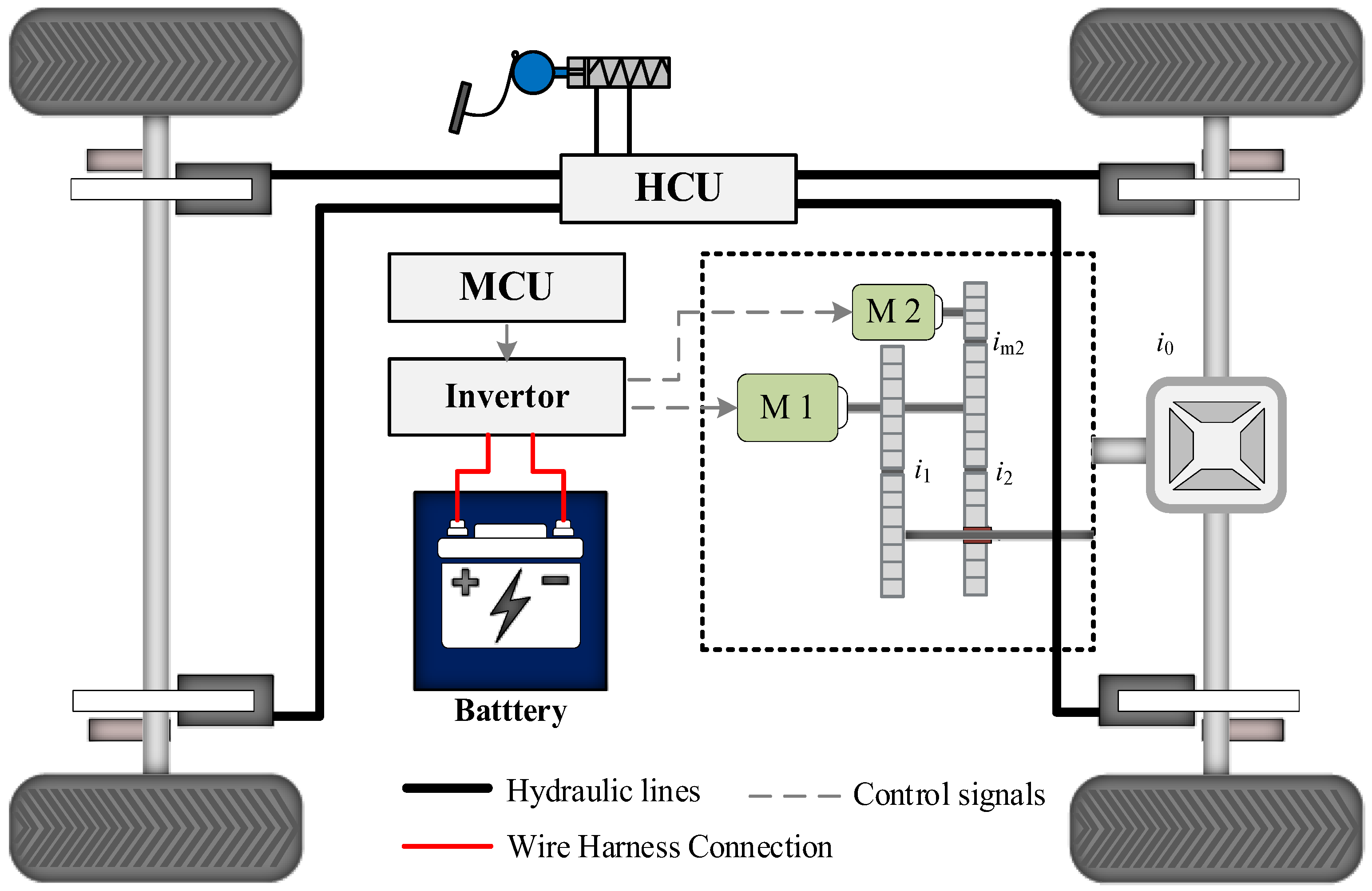
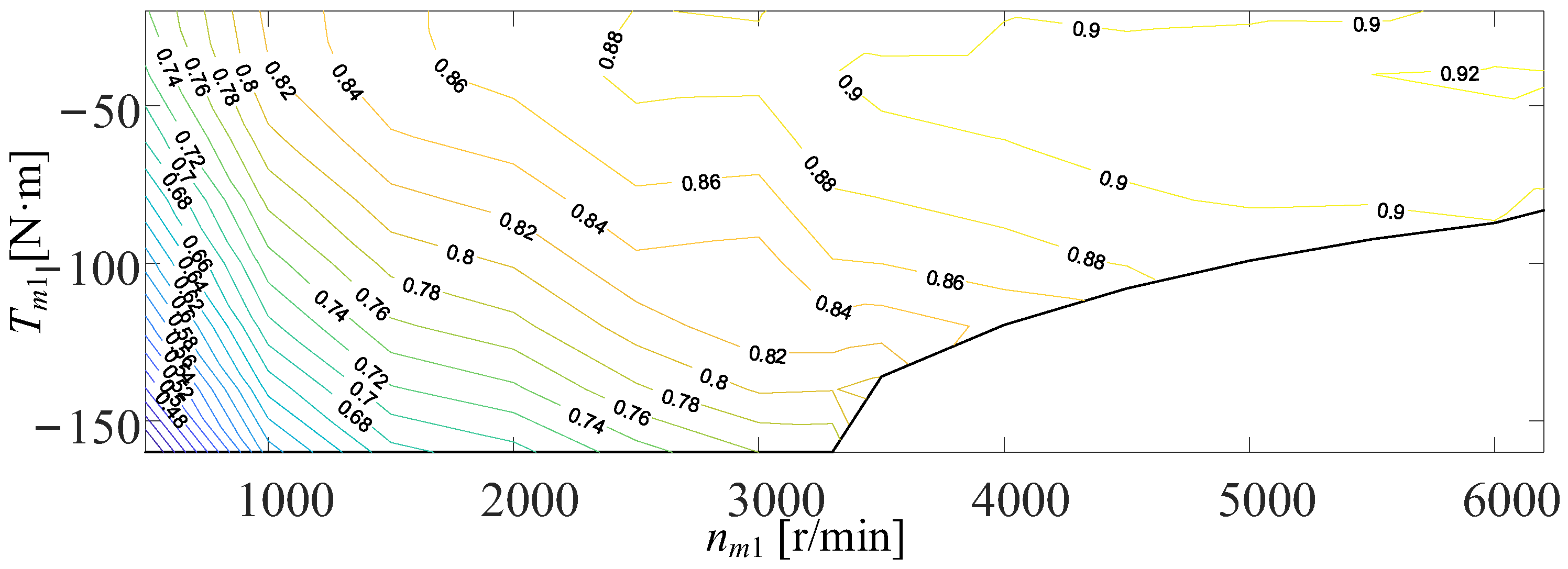
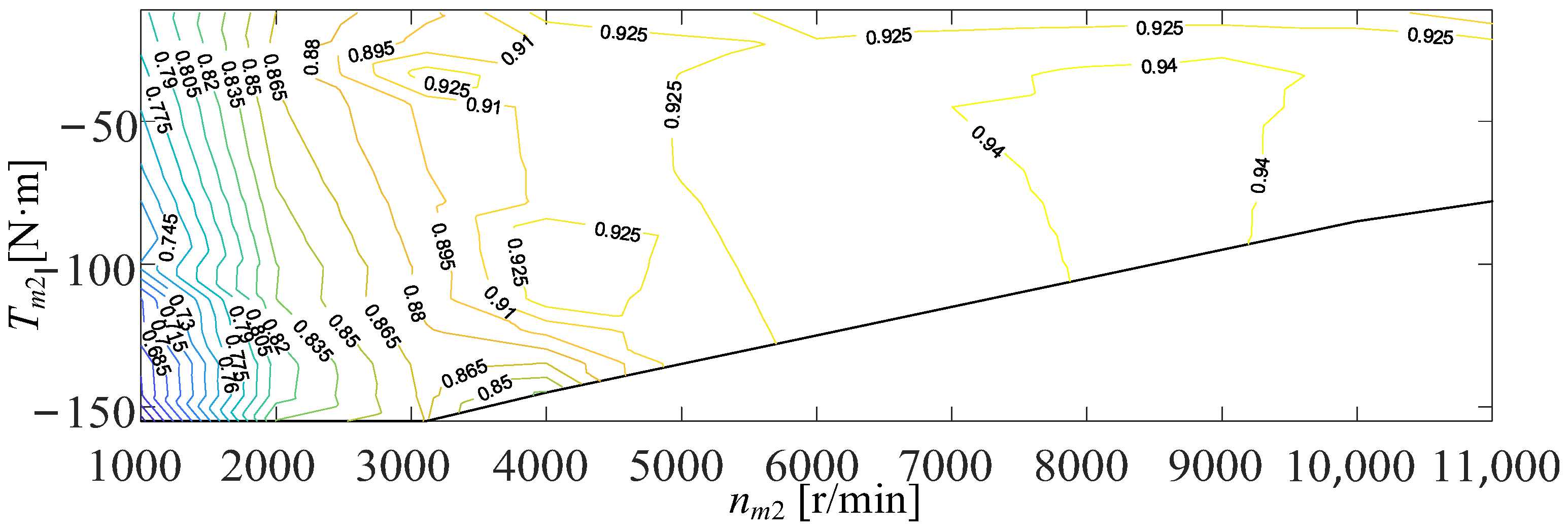

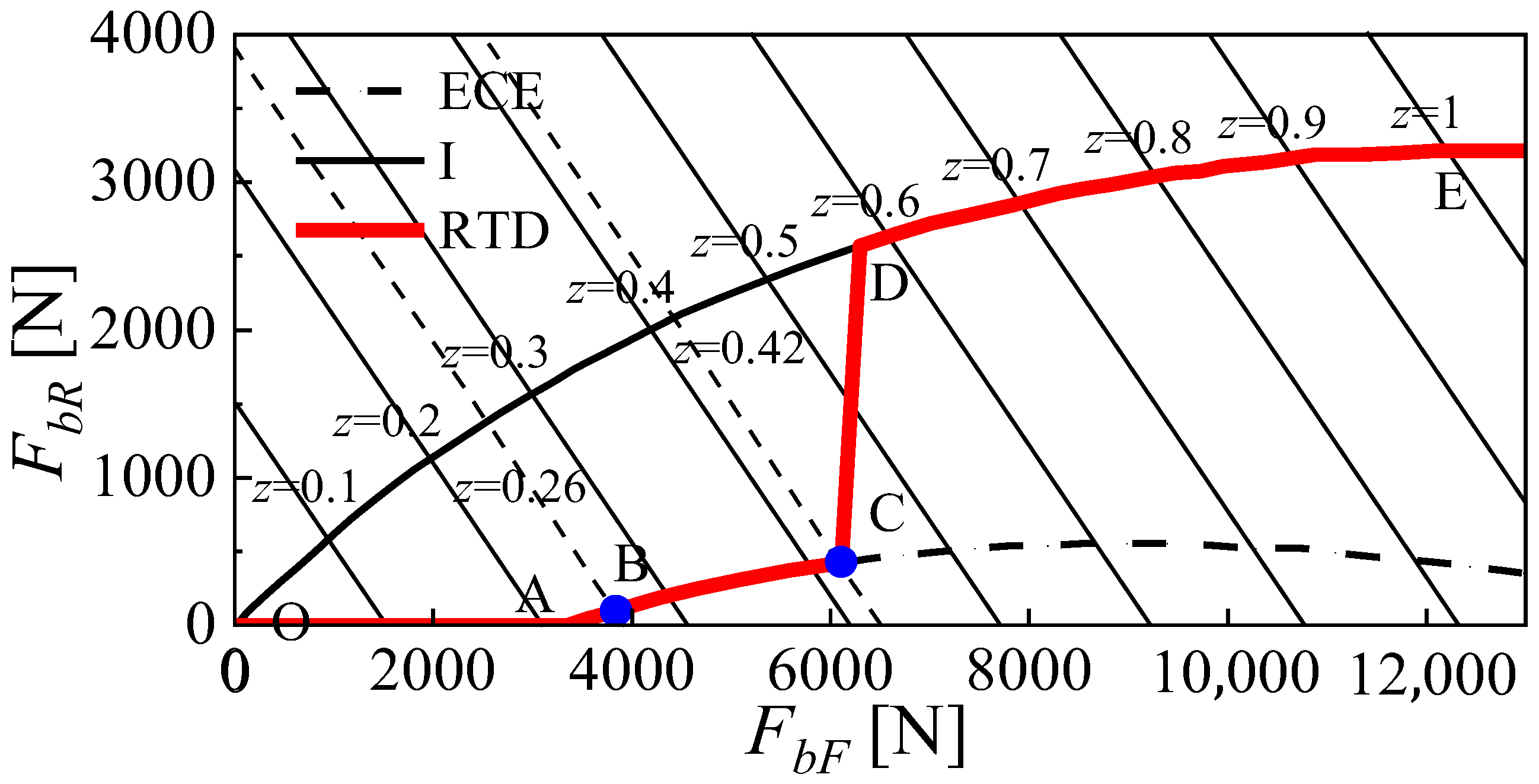
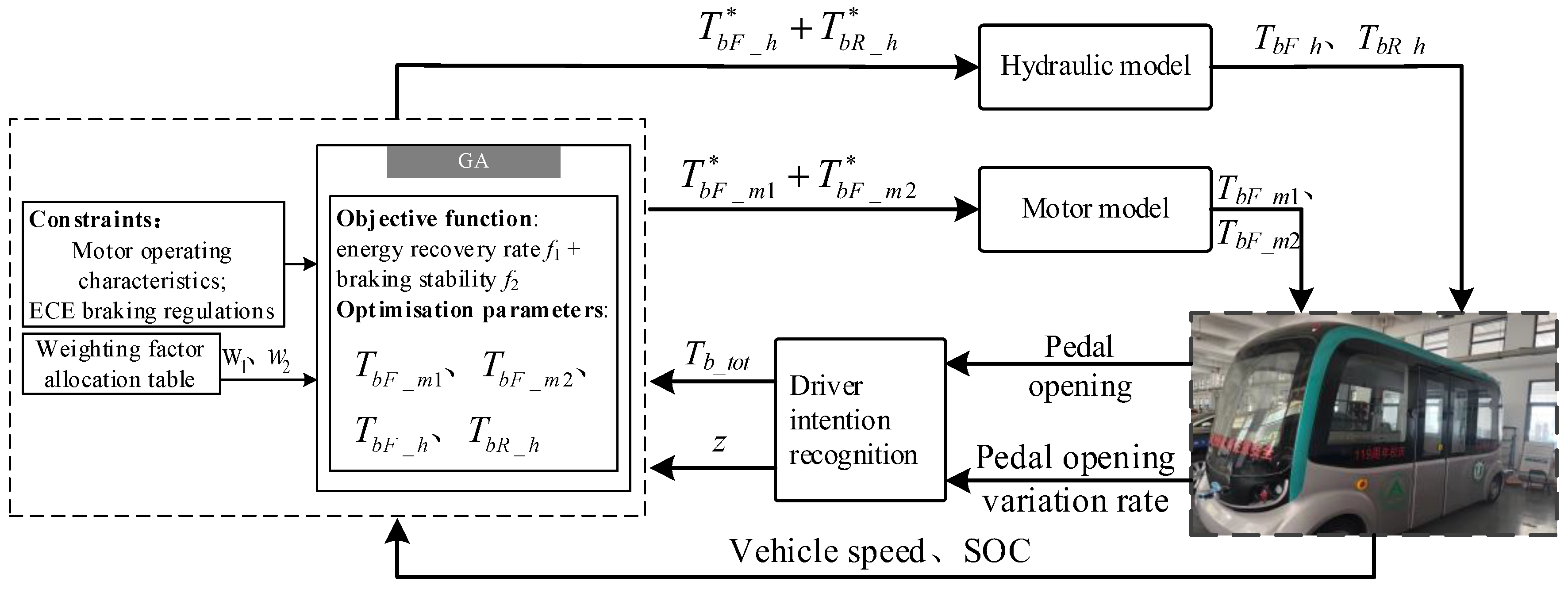

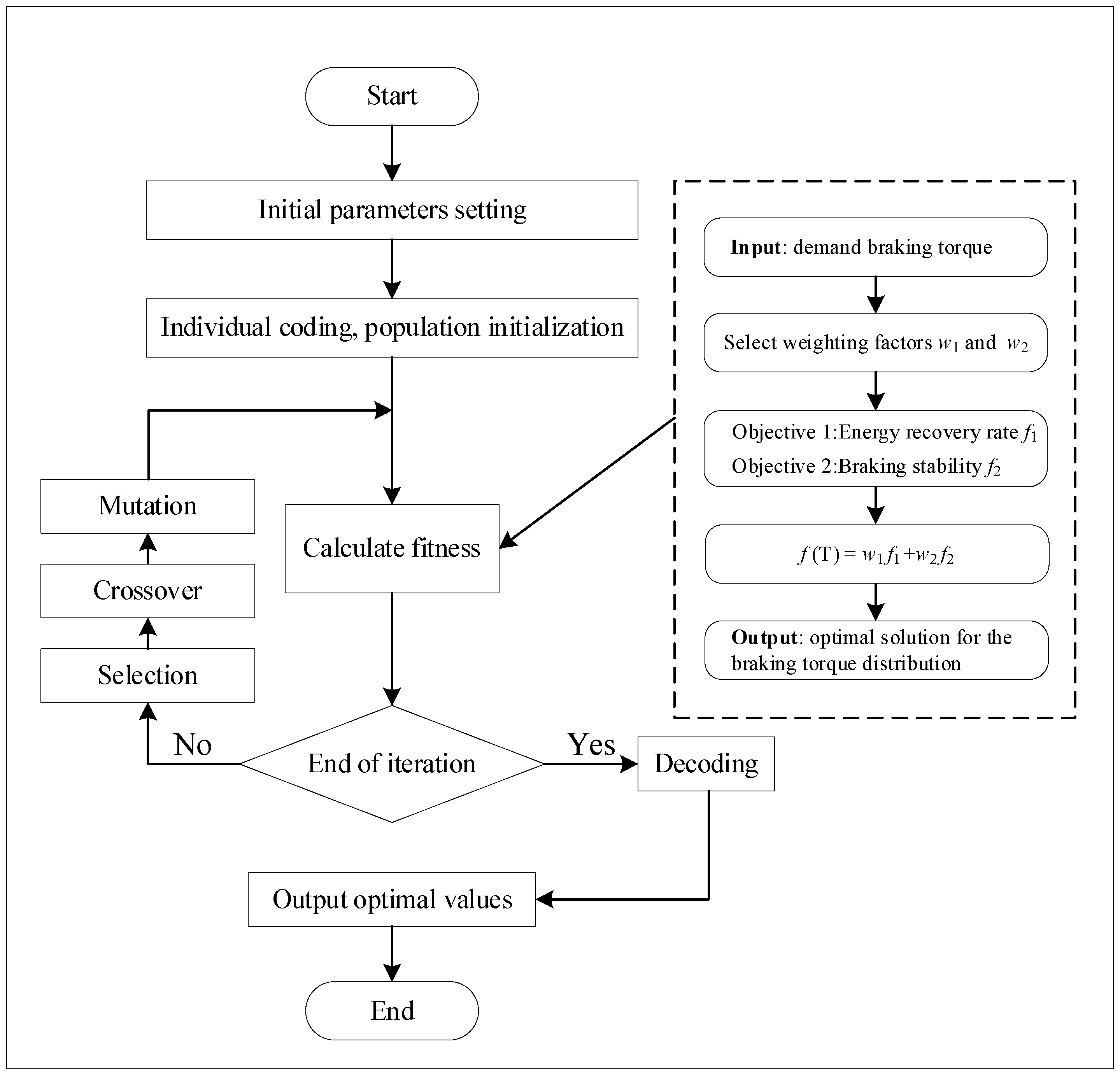

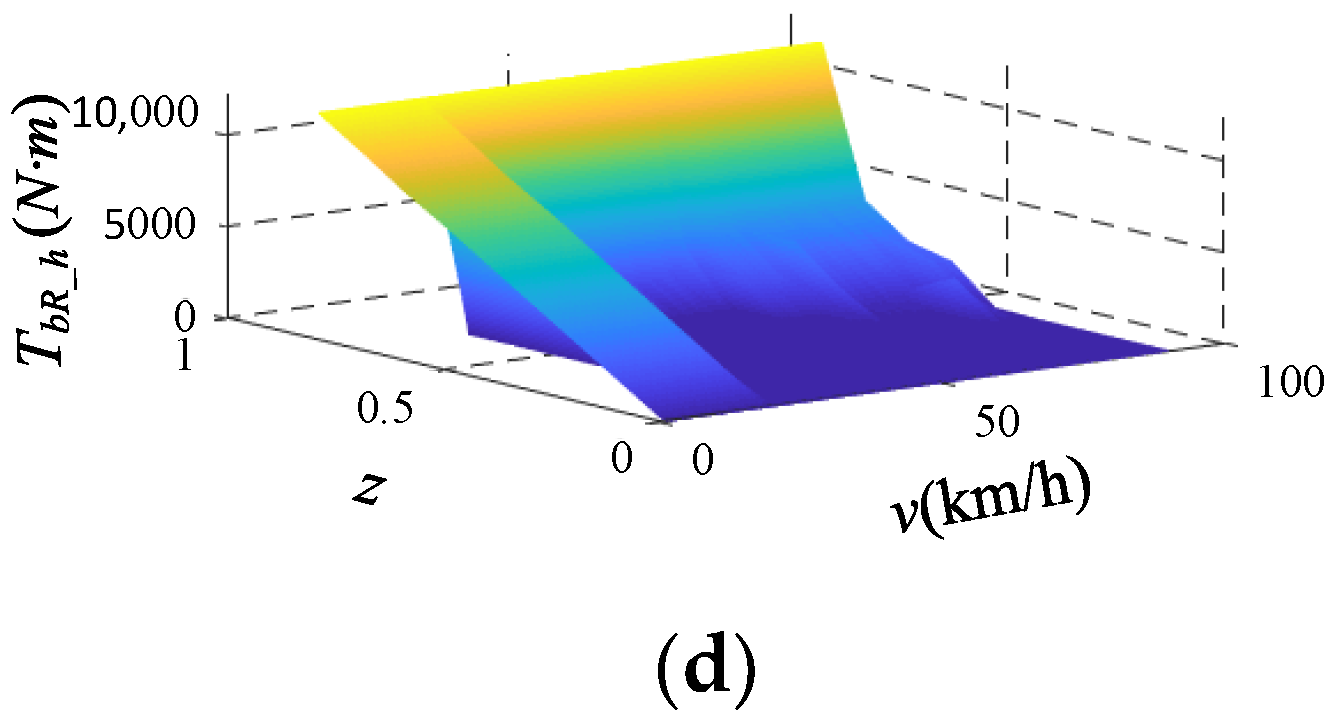
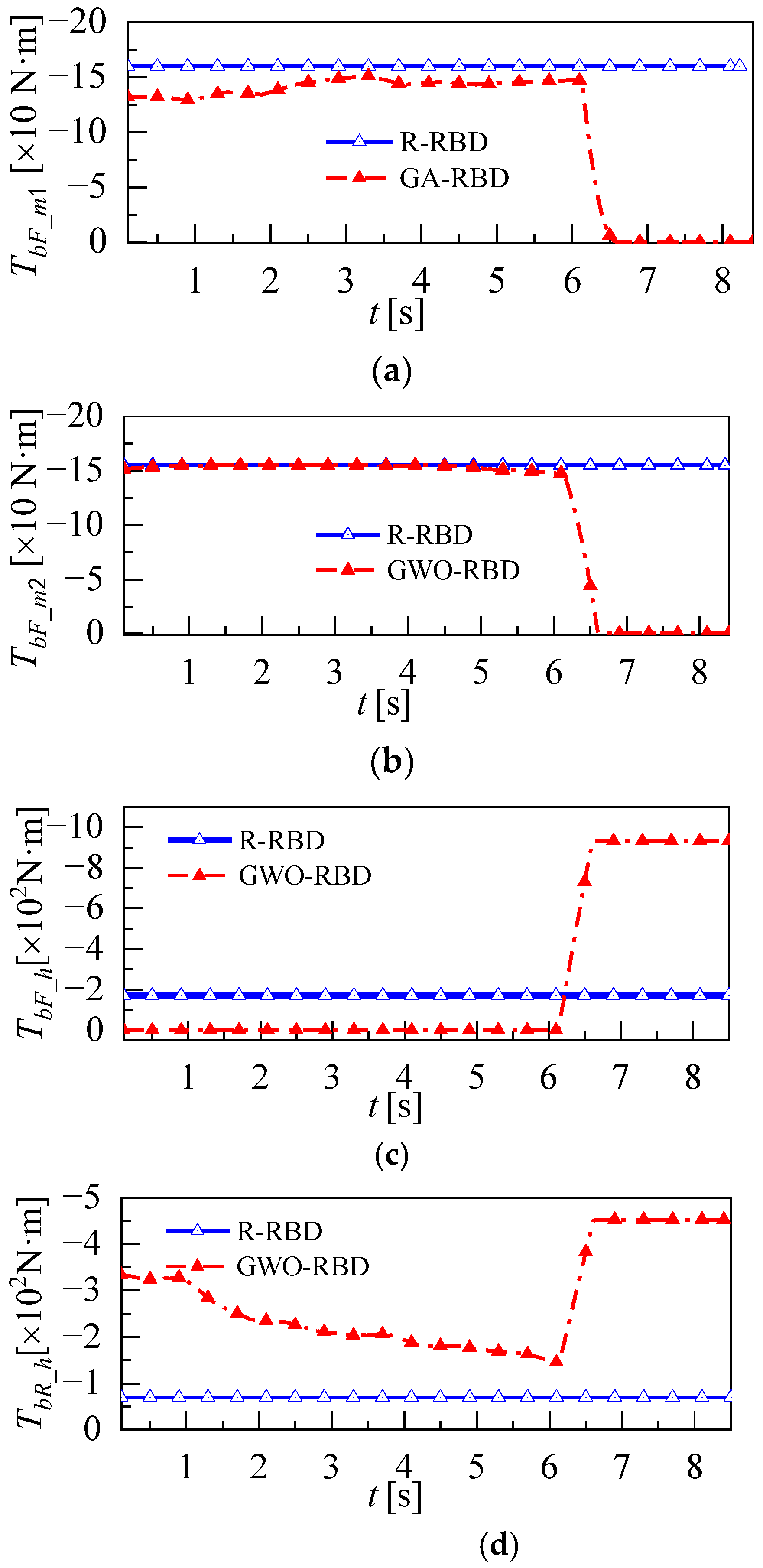
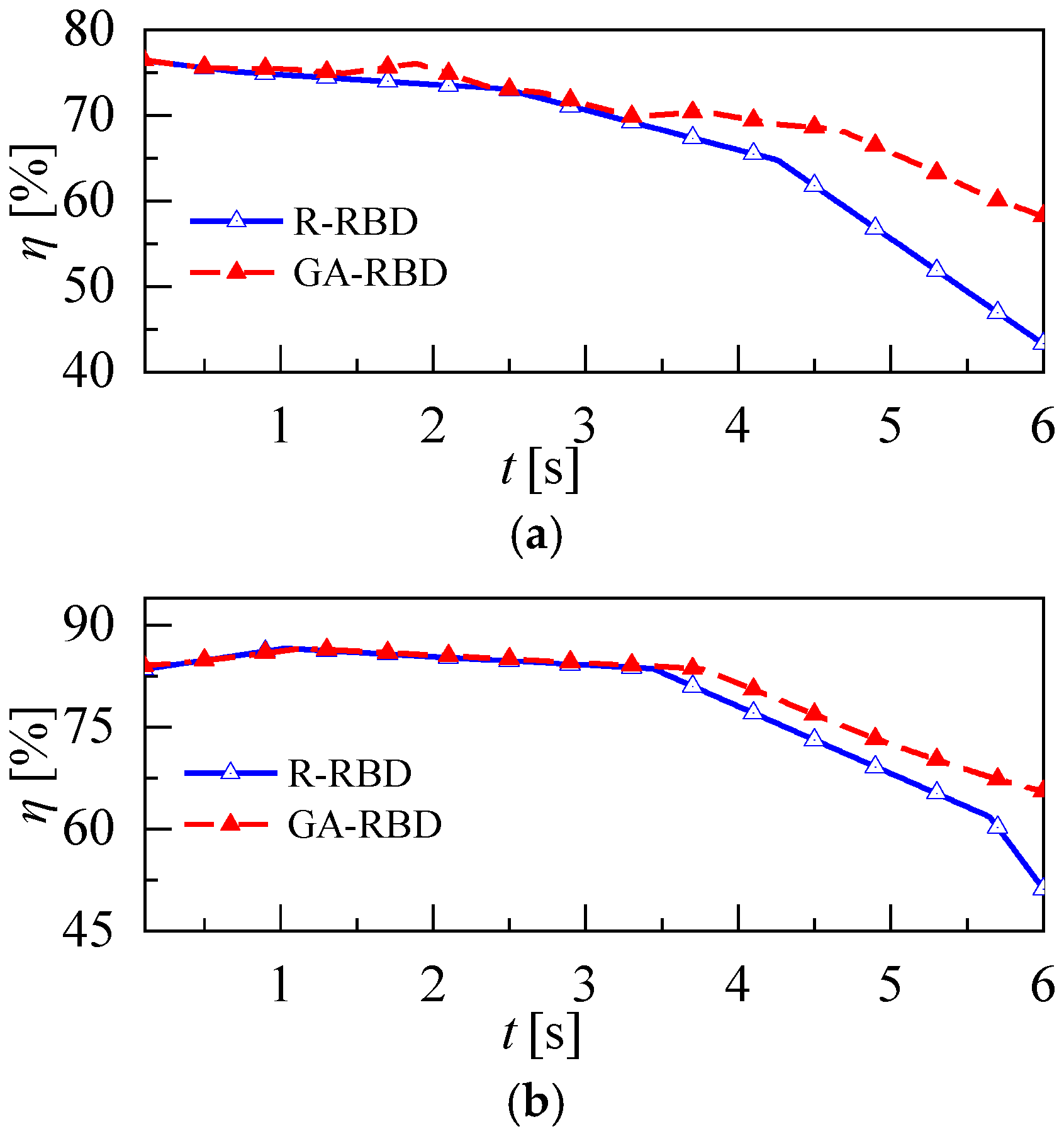

| Components | Description |
|---|---|
| Transmission | Reduction ratios (i1, i2): 2.11/1.31 |
| Final drive ratio (i0): 3.91 | |
| Reduction ratio of the motor 2 end (im2): 1.72 | |
| Motor | Type: Permanent magnet synchronous motor (PMSM) |
| Maximum power: 55 kW (M1); 75 kW (M2) | |
| Battery | Type: NiMH |
| Voltage: 387 V | |
| Capacity: 25 kW·h | |
| Vehicle | Internal resistance: 0.015 Ω |
| Vehicle mass: 1570 kg | |
| Frontal area of vehicle: 1.26 m2; Aerodynamic drag: 0.35 | |
| Tire rolling resistance coefficient: 0.018 | |
| Drive wheel radius: 0.3 m |
| Braking Intensity | Vehicle Speed [km/h] | Distribution Strategy | ε-RMS | Change Rate | Recovered Energy [KJ] | Change Rate |
|---|---|---|---|---|---|---|
| 0.2 | v = 60 | R-RBD | 0.482 | −2.7% | 30.43 | 8.3% |
| GA-RBD | 0.469 | 32.96 | ||||
| v = 75 | R-RBD | 0.473 | −3.8% | 34.63 | 10.2% | |
| GA-RBD | 0.455 | 38.16 | ||||
| v = 90 | R-RBD | 0.452 | −4.3% | 42.09 | 13.1% | |
| GA-RBD | 0.433 | 47.60 | ||||
| 0.4 | v = 60 | R-RBD | 0.331 | −2.9% | 21.32 | 11.5% |
| GA-RBD | 0.321 | 23.77 | ||||
| v = 75 | R-RBD | 0.321 | −3.1% | 21.12 | 14.2% | |
| GA-RBD | 0.311 | 24.12 | ||||
| v = 90 | R-RBD | 0.311 | −3.4% | 19.71 | 18.1% | |
| GA-RBD | 0.300 | 23.28 | ||||
| 0.6 | v = 60 | R-RBD | 0.150 | −4.6% | 8.29 | 13.5% |
| GA-RBD | 0.143 | 9.08 | ||||
| v = 75 | R-RBD | 0.140 | −5.0% | 11.01 | 16.2% | |
| GA-RBD | 0.133 | 12.79 | ||||
| v = 90 | R-RBD | 0.128 | −5.4% | 13.71 | 20.2% | |
| GA-RBD | 0.121 | 16.48 |
Disclaimer/Publisher’s Note: The statements, opinions and data contained in all publications are solely those of the individual author(s) and contributor(s) and not of MDPI and/or the editor(s). MDPI and/or the editor(s) disclaim responsibility for any injury to people or property resulting from any ideas, methods, instructions or products referred to in the content. |
© 2023 by the authors. Licensee MDPI, Basel, Switzerland. This article is an open access article distributed under the terms and conditions of the Creative Commons Attribution (CC BY) license (https://creativecommons.org/licenses/by/4.0/).
Share and Cite
Wu, T.; Wang, F.; Ye, P. Regenerative Braking Strategy of Dual-Motor EV Considering Energy Recovery and Brake Stability. World Electr. Veh. J. 2023, 14, 19. https://doi.org/10.3390/wevj14010019
Wu T, Wang F, Ye P. Regenerative Braking Strategy of Dual-Motor EV Considering Energy Recovery and Brake Stability. World Electric Vehicle Journal. 2023; 14(1):19. https://doi.org/10.3390/wevj14010019
Chicago/Turabian StyleWu, Tonglie, Feng Wang, and Peng Ye. 2023. "Regenerative Braking Strategy of Dual-Motor EV Considering Energy Recovery and Brake Stability" World Electric Vehicle Journal 14, no. 1: 19. https://doi.org/10.3390/wevj14010019
APA StyleWu, T., Wang, F., & Ye, P. (2023). Regenerative Braking Strategy of Dual-Motor EV Considering Energy Recovery and Brake Stability. World Electric Vehicle Journal, 14(1), 19. https://doi.org/10.3390/wevj14010019







